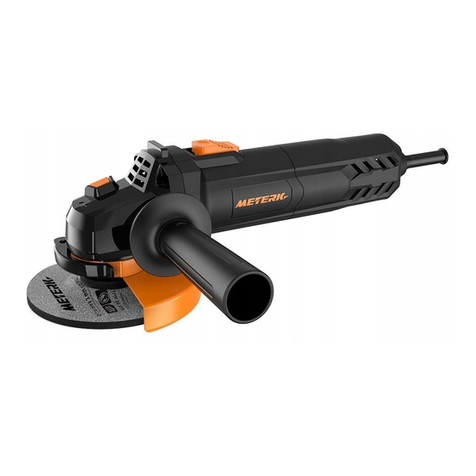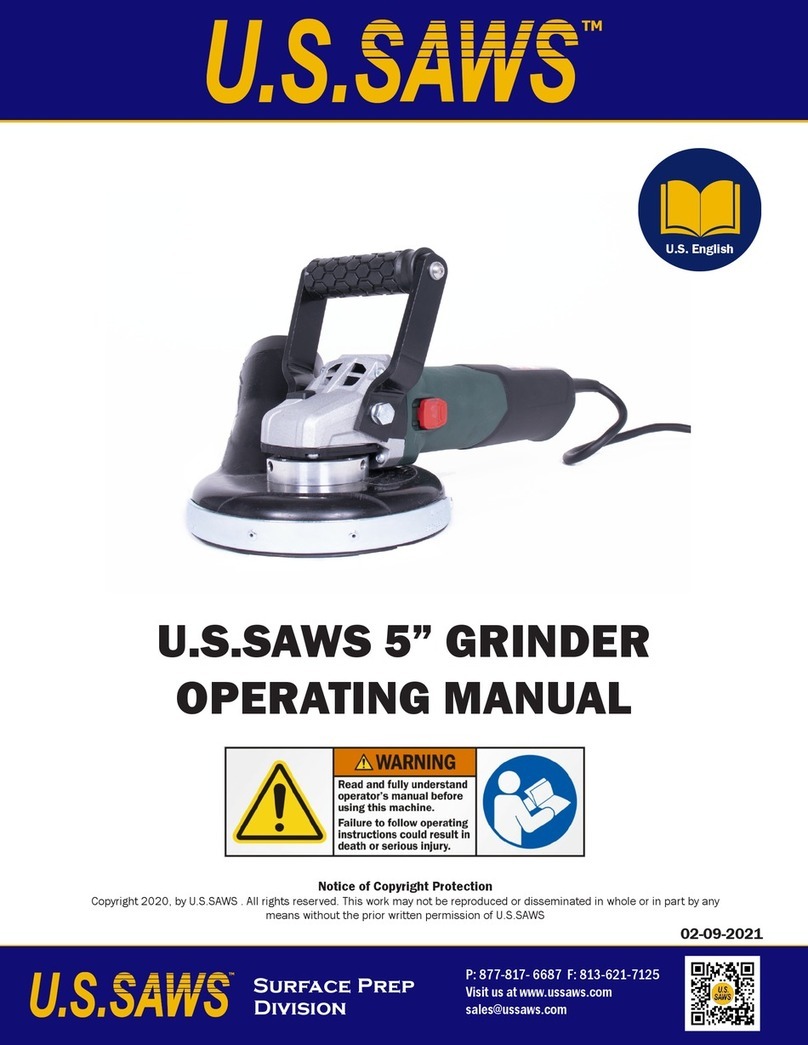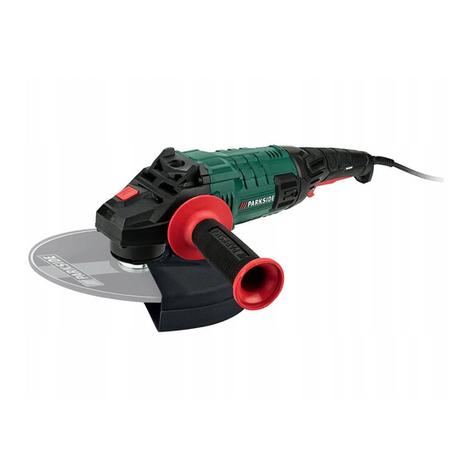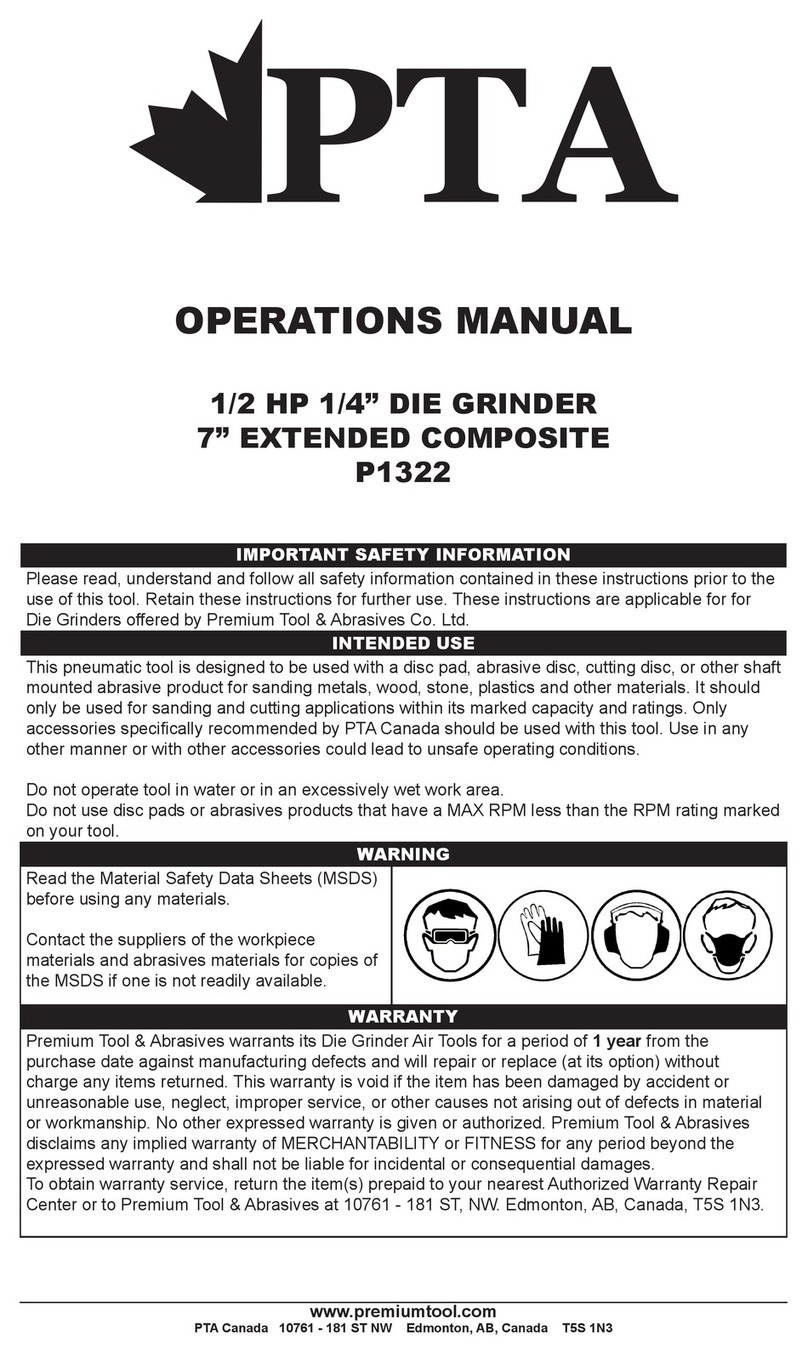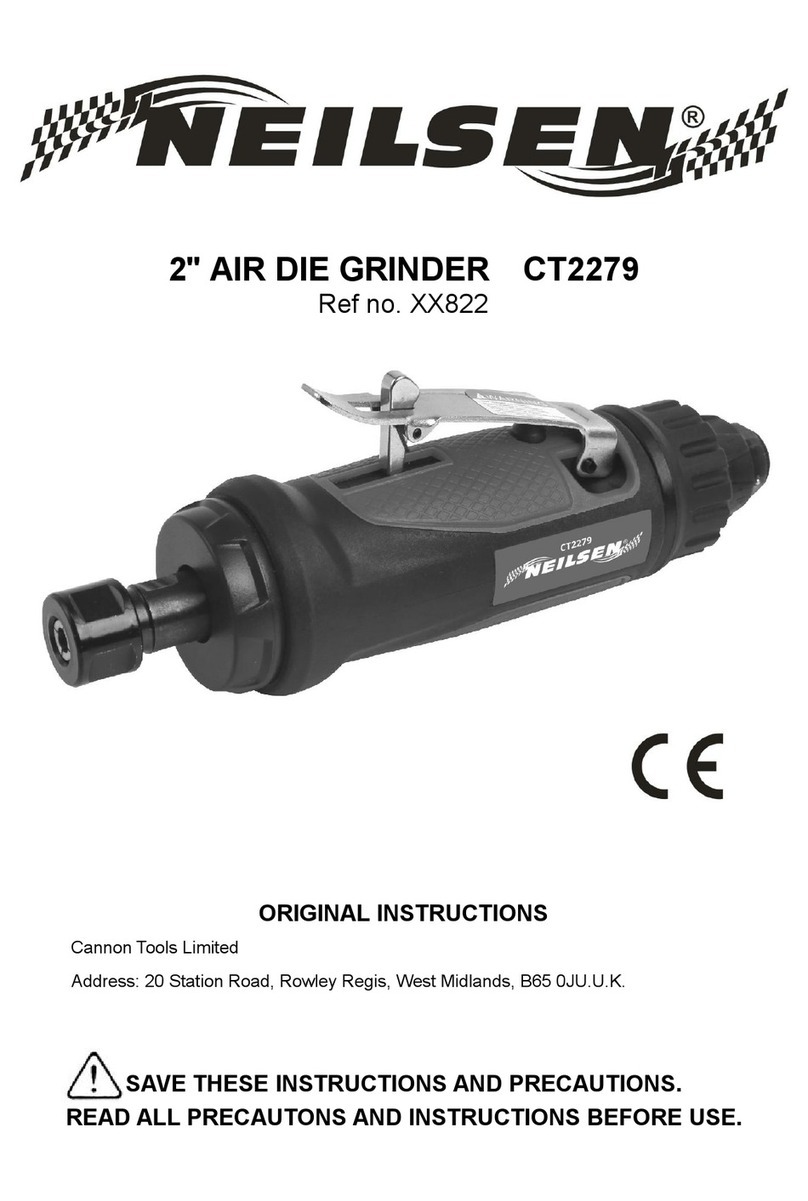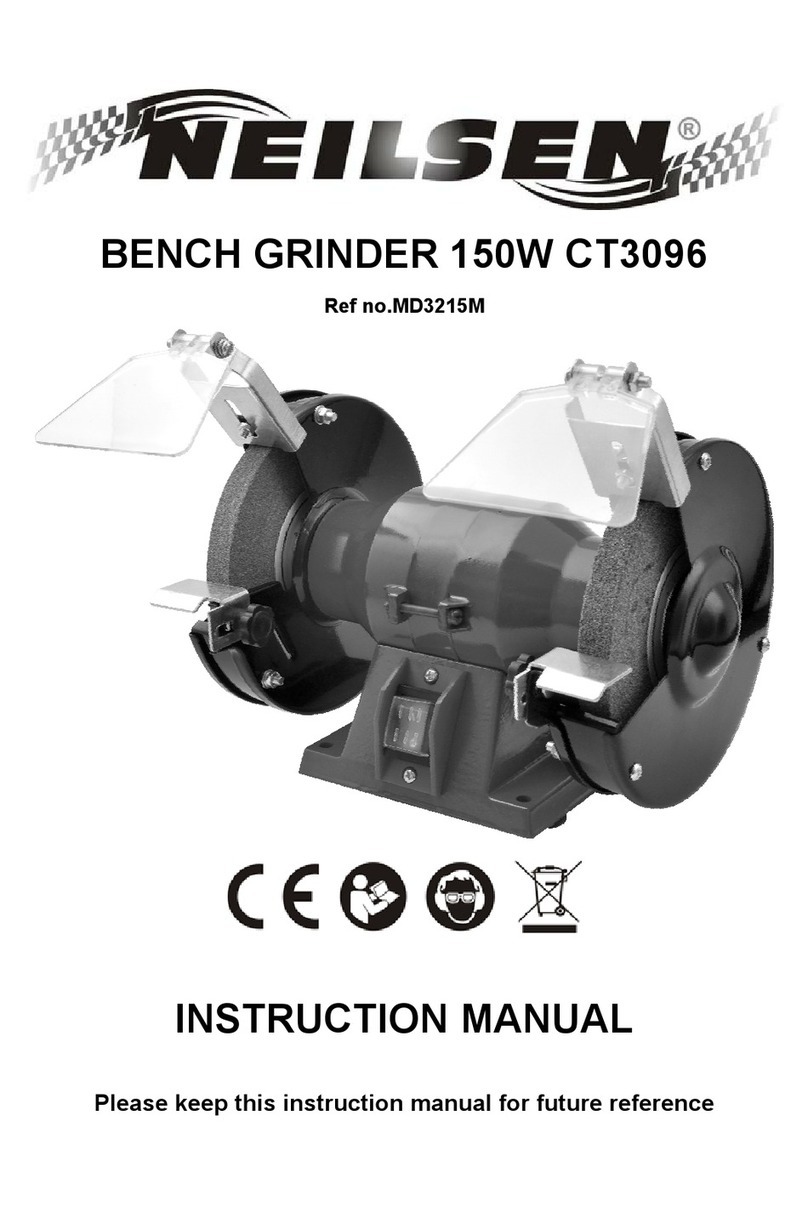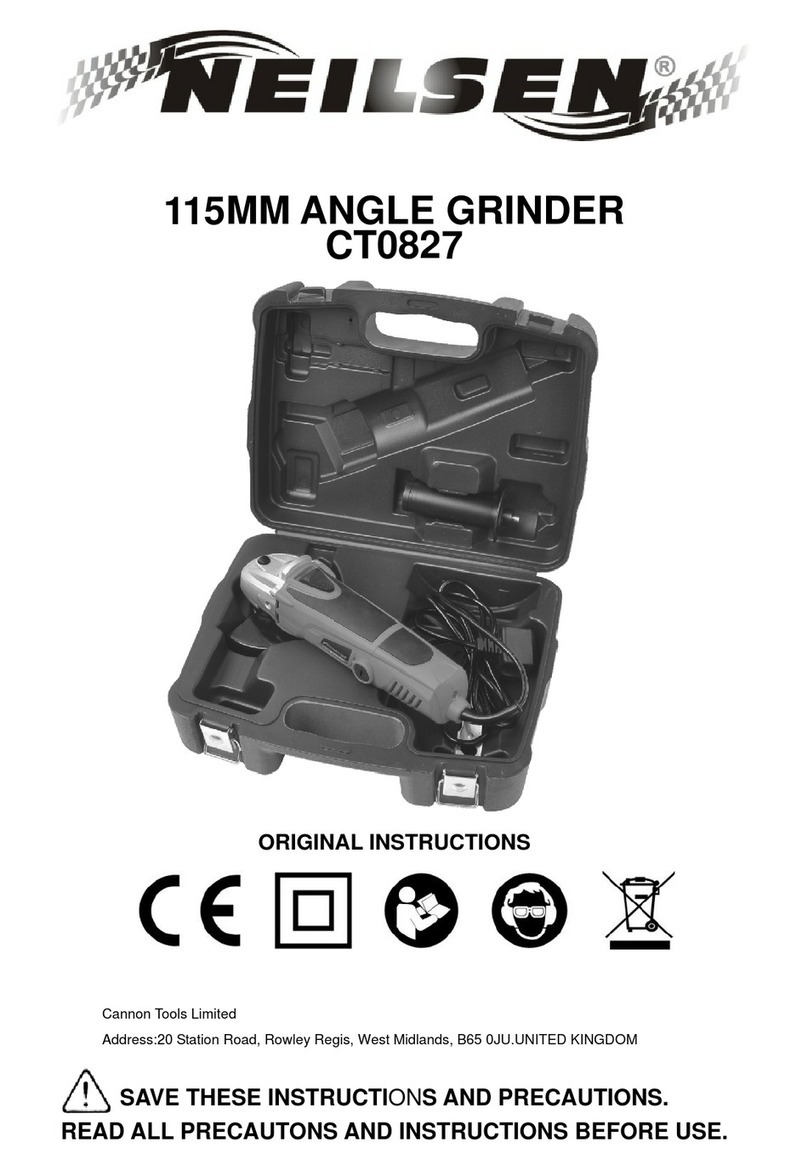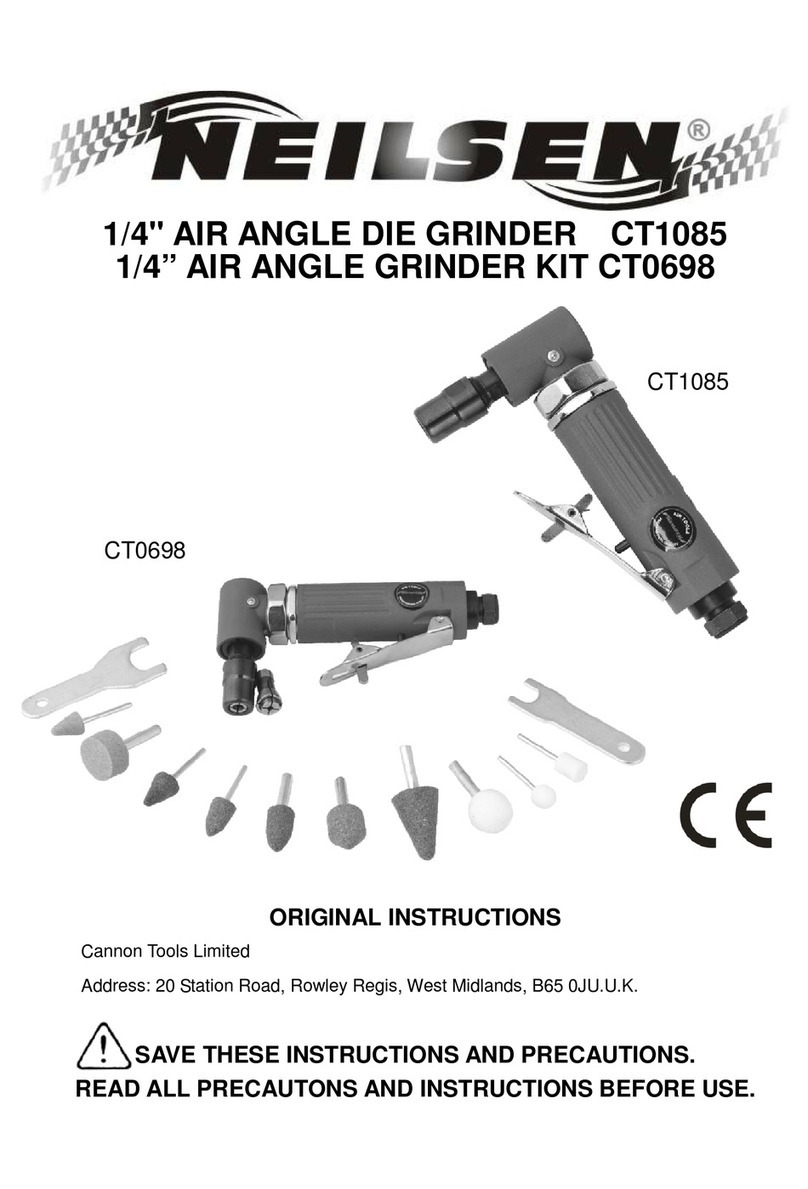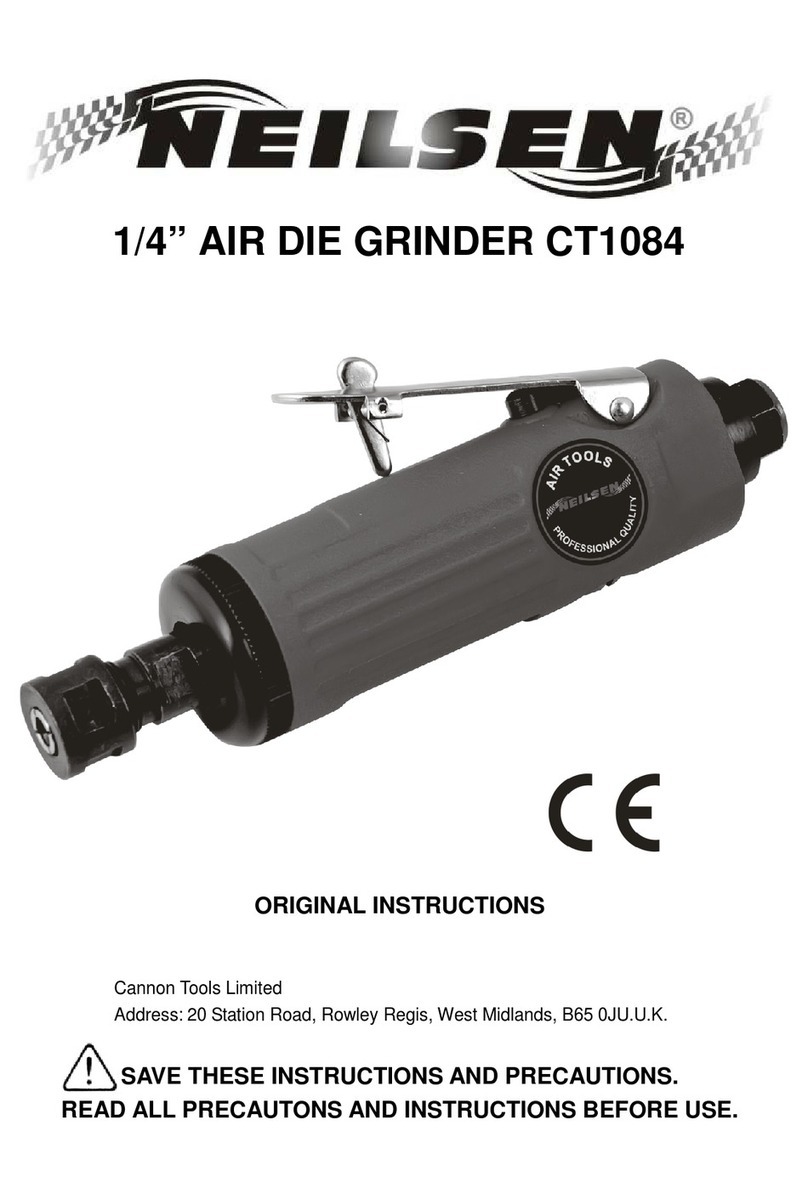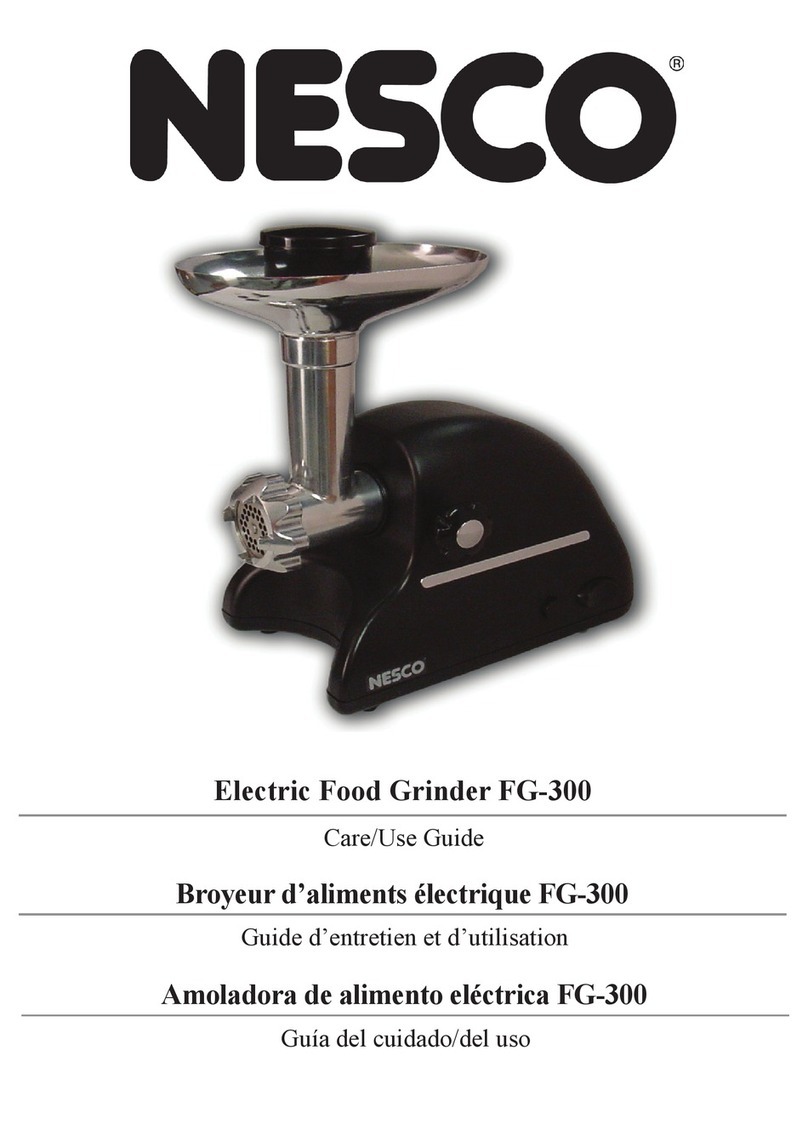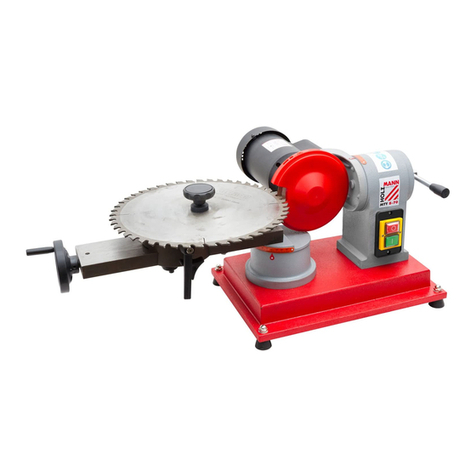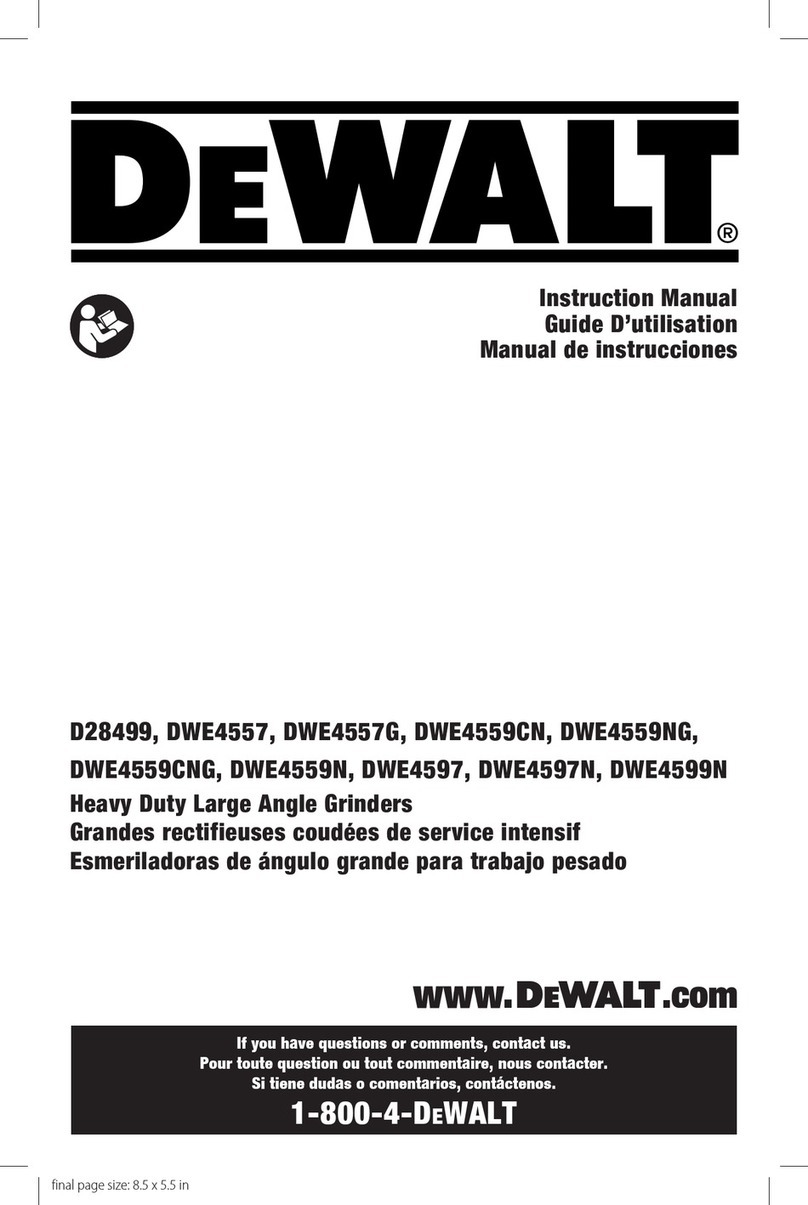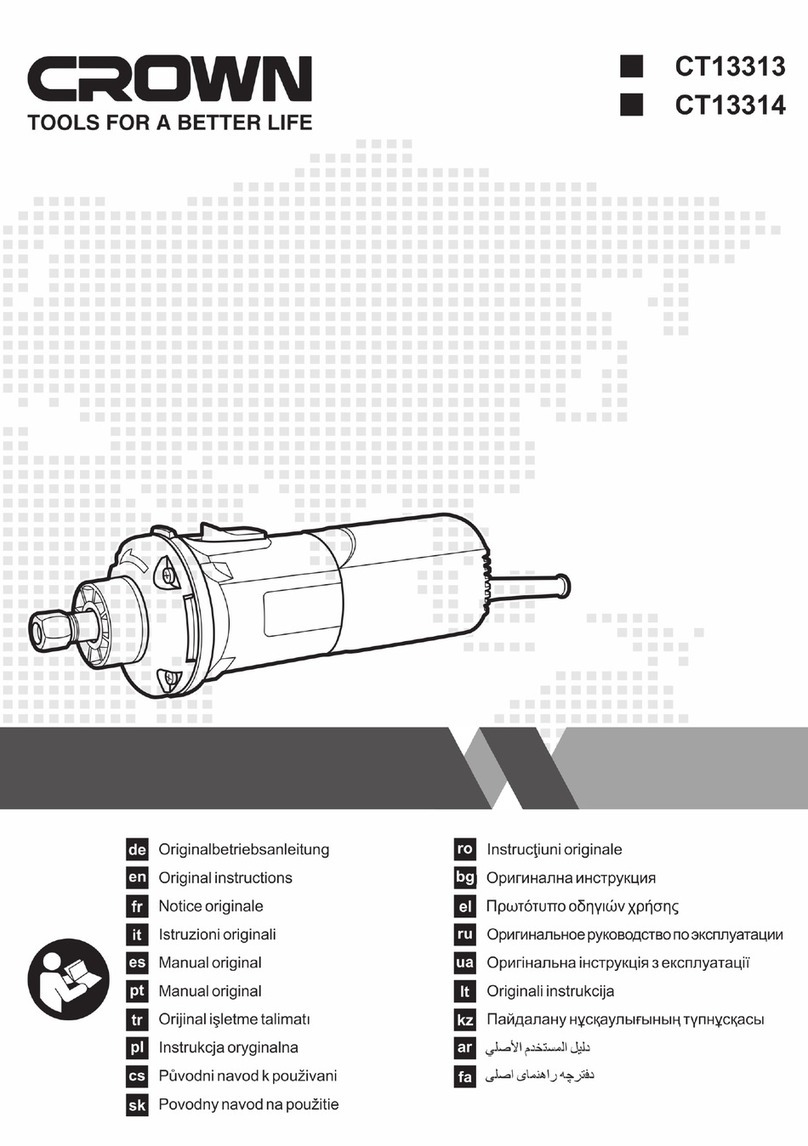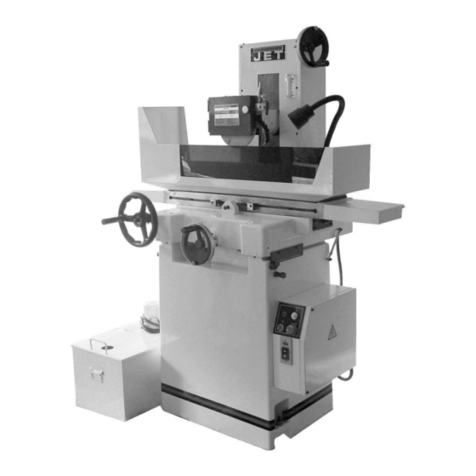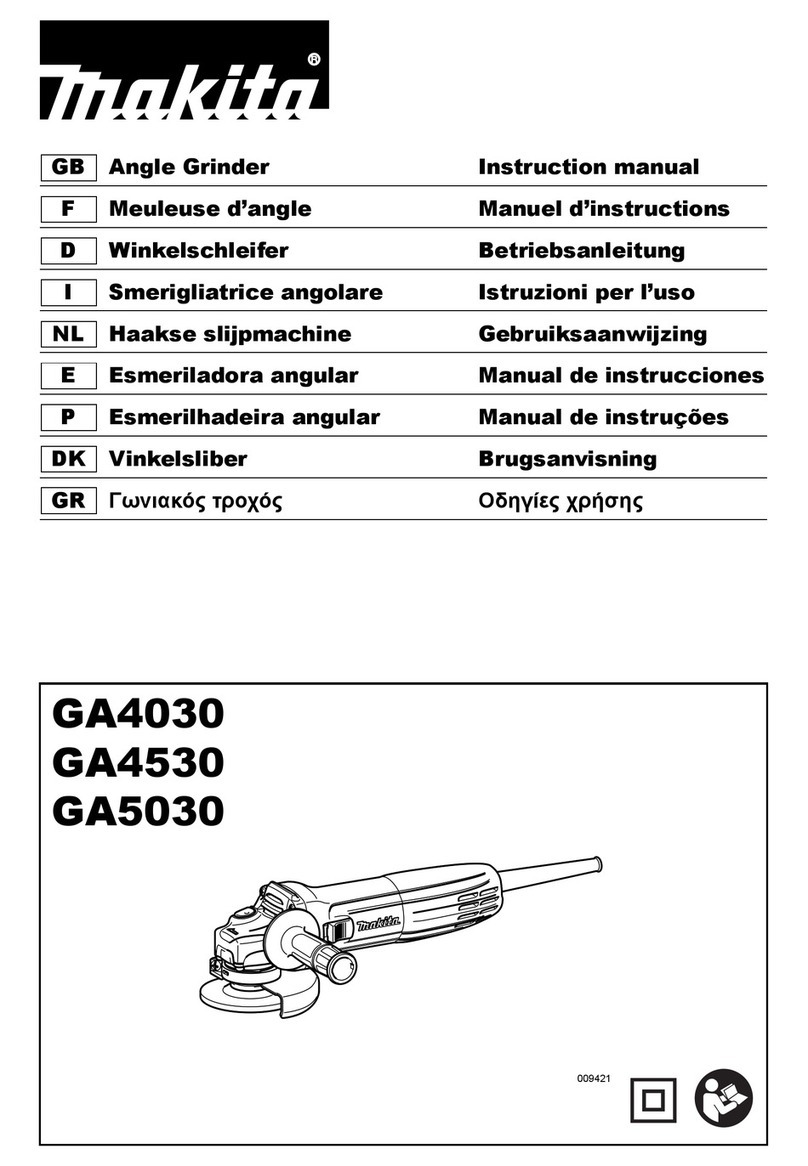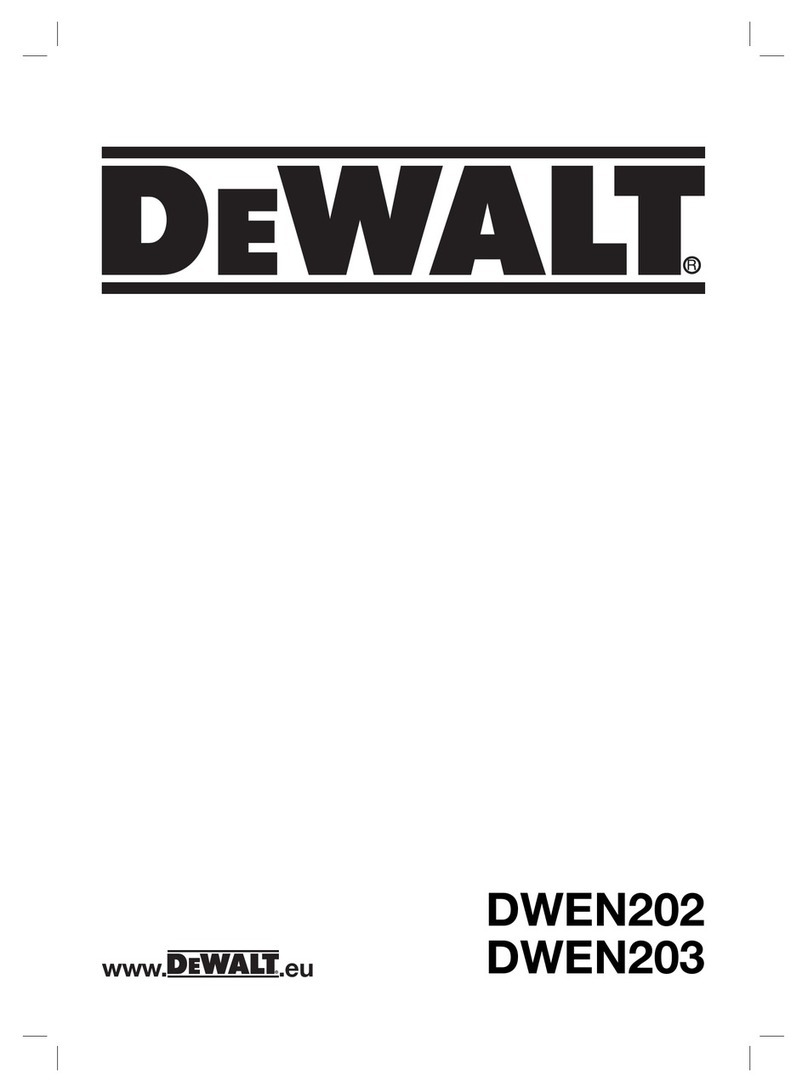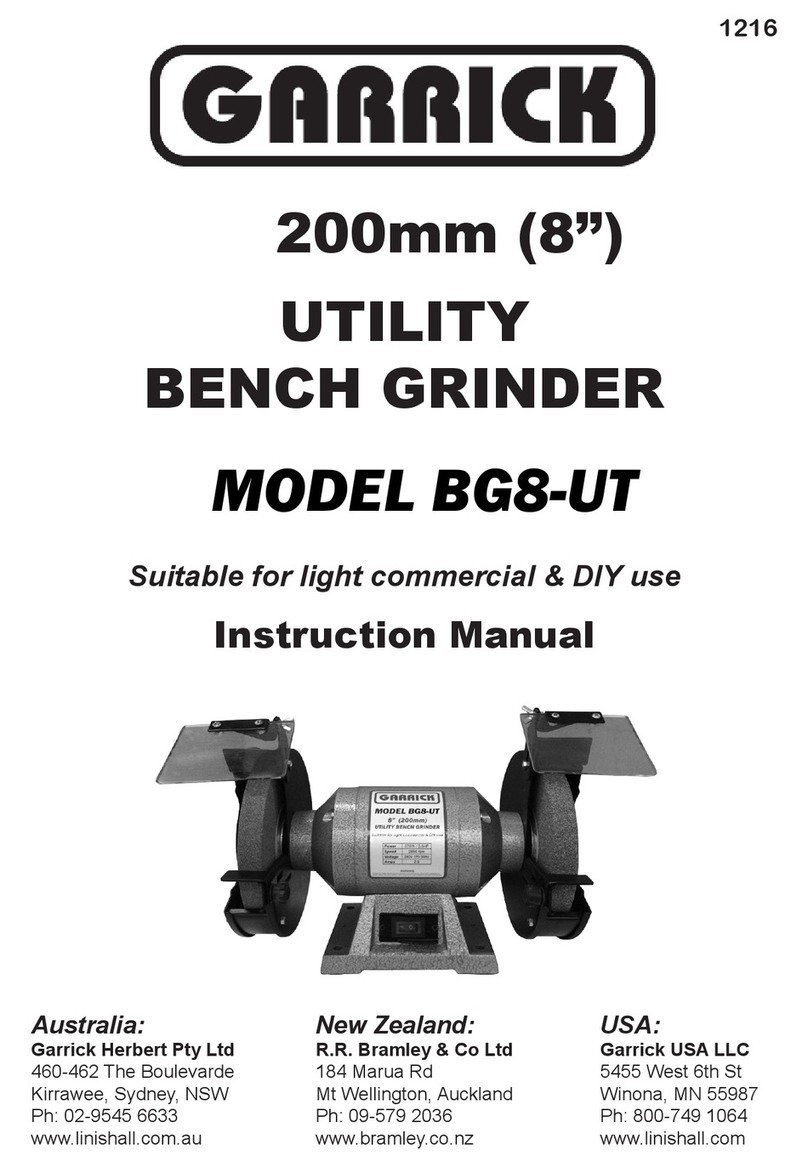
4
f. Maintain the tool with care. A properly maintained tool is easier to control.
g. Check for misalignment or binding of moving parts, breakage of parts, and
any other condition that affects the tool’s operation. If damaged, have the Air
Angle Die Grinder serviced before using. Many accidents are caused by
poorly maintained tools. There is a risk of bursting if the tool is damaged.
h. Use only accessories that are identified by the manufacturer for the specific
tool model. Use of an accessory not intended for use with the specific tool
model, increases the risk of injury to persons.
Tool service must be performed only by qualified repair personnel.
b.When servicing the Air Angle Die Grinder, use only identical replacement
parts. Use only authorized parts.
c.Use only the lubricants supplied with the tool or specified by the
manufacturer.
Air source
a.Never connect to an air source that is capable of exceeding 200 psi.
Over pressurizing the tool may cause bursting, abnormal operation, breakage
of the tool or serious injury to persons. Use only clean, dry, regulated
compressed air at the rated pressure or within the rated pressure range as
marked on the tool. Always verify prior to using the tool that the air source has
been adjusted to the rated air pressure or within the rated air-pressure range.
b.Never use oxygen, carbon dioxide, combustible gases or any bottled
gas as an air source for the tool. Such gases are capable of explosion and
serious injury to persons.
This tool vibrates during use. Repeated or long-term exposure to vibration
may cause temporary or permanent physical injury, particularly to the hands,
arms and shoulders. To reduce the risk of vibration-related injury:
